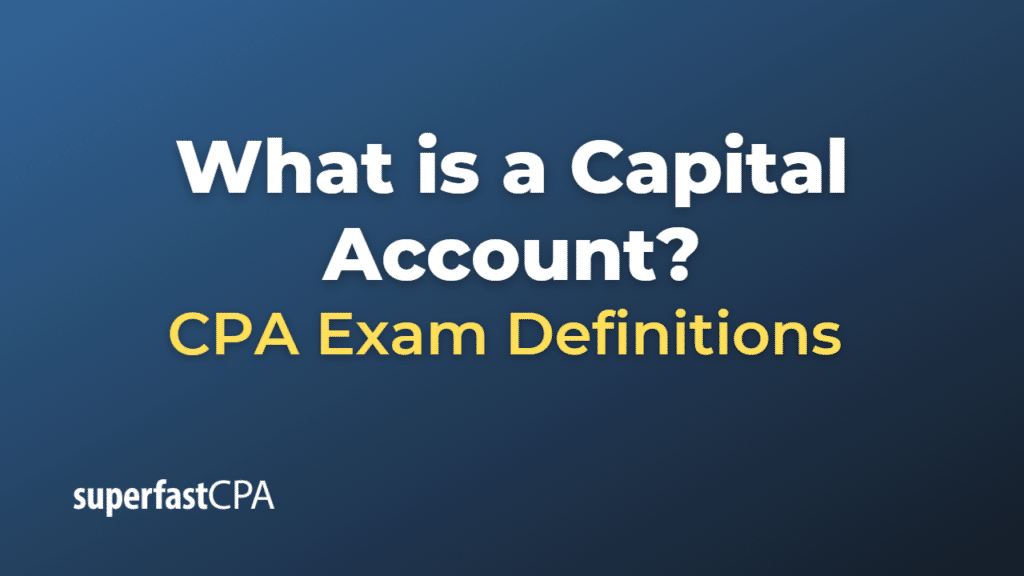Capital Account
A capital account has two distinct meanings in finance and economics, depending on the context in which it is used:
- In the context of international economics, the capital account is a component of a country’s balance of payments, which records transactions involving the transfer of ownership of assets between residents of the country and non-residents. The capital account typically includes transactions such as foreign direct investment (FDI), portfolio investment, and changes in reserve assets. The capital account, together with the current account and financial account, makes up a country’s balance of payments.
In this context, a positive capital account balance indicates that the country is a net recipient of investment from foreign entities, while a negative balance signifies that the country is a net exporter of capital to other countries. Policymakers and economists analyze capital account data to understand the flow of capital across borders, the impact of international investment on the domestic economy, and the overall health of the country’s balance of payments.
- In the context of business accounting, a capital account refers to an account in the equity section of a company’s balance sheet that tracks the investments made by the company’s owners (shareholders) and the retained earnings generated by the business. The capital account represents the owners’ claims on the company’s assets, after accounting for liabilities.
In this context, the capital account is used to record transactions such as the issuance of new shares, the payment of dividends, and the accumulation of retained earnings. Business owners and managers monitor the capital account to assess the company’s financial health and evaluate the return on investment for shareholders.
In summary, the term “capital account” has different meanings depending on the context. In international economics, it refers to a component of a country’s balance of payments, while in business accounting, it represents the equity or ownership claims on a company’s assets.
Example of a Capital Account
I’ll provide an example for each context in which the term “capital account” is used:
- International economics:
Suppose the fictional country of Econland has the following capital account transactions in a given year:
- Foreign direct investment (FDI) inflows: $2 billion
- Foreign direct investment (FDI) outflows: $1 billion
- Portfolio investment inflows: $500 million
- Portfolio investment outflows: $300 million
- Change in reserve assets: -$100 million (a decrease in reserve assets)
To calculate Econland’s capital account balance, we sum up the inflows and outflows:
Capital account balance = (FDI inflows – FDI outflows) + (Portfolio investment inflows – Portfolio investment outflows) + Change in reserve assets
Capital account balance = ($2 billion – $1 billion) + ($500 million – $300 million) – $100 million
Capital account balance = $1 billion + $200 million – $100 million
Capital account balance = $1.1 billion
In this example, Econland has a positive capital account balance of $1.1 billion, indicating that it is a net recipient of investment from foreign entities.
- Business accounting:
Let’s consider a fictional small business, “BakeryDelight,” and examine its capital account. BakeryDelight is owned by two partners, Alice and Bob. The capital account records their initial investments and any retained earnings generated by the business.
Suppose Alice and Bob each invested $10,000 to start the bakery. In the first year of operation, BakeryDelight generates a net income of $15,000 and pays out $5,000 as dividends to the partners.
The capital account for BakeryDelight would reflect the following transactions:
- Initial investments by Alice and Bob: $20,000 ($10,000 + $10,000)
- Retained earnings (net income – dividends): $10,000 ($15,000 – $5,000)
The capital account balance for BakeryDelight at the end of the first year would be $30,000 ($20,000 + $10,000), representing the owners’ equity in the business. This balance provides insights into the financial health of the business and the return on investment for the partners.












